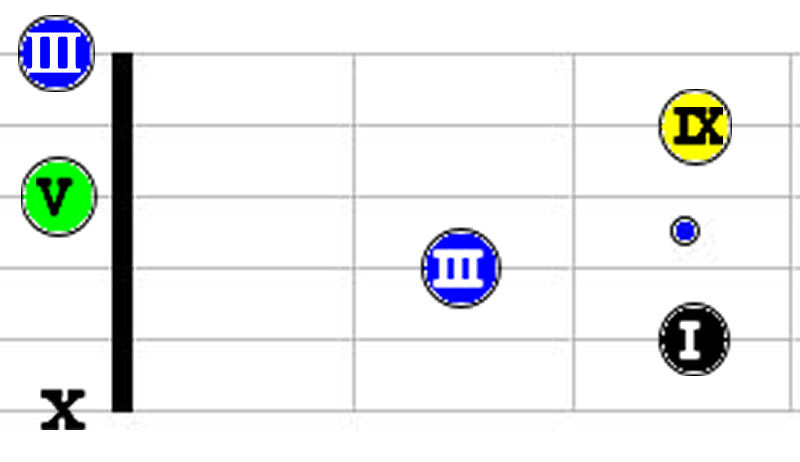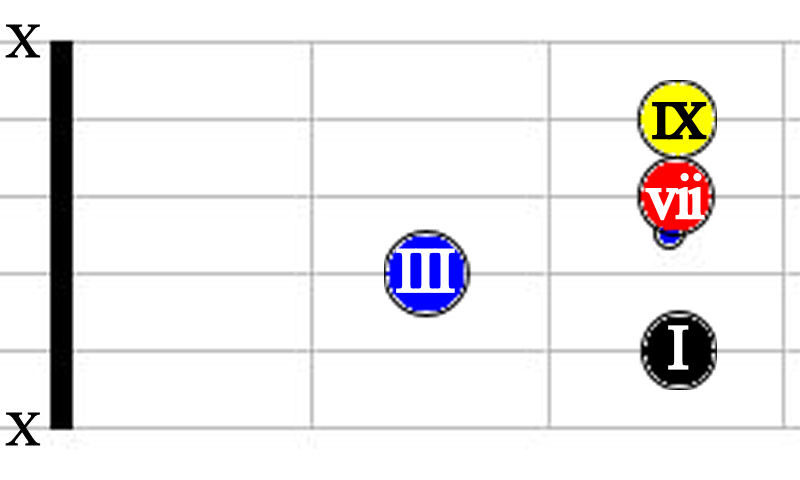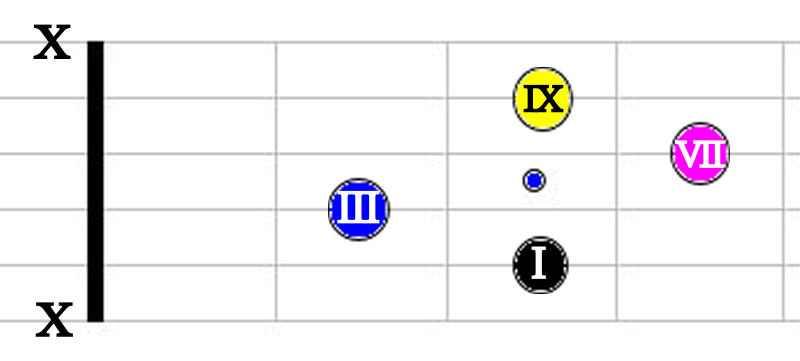I get asked this question a lot in my guitar lessons: “What’s the difference between this 9 and that 9?” Let’s do a review.
I talk a lot about basic music theory applied to the guitar in this newsletter. I do so because I want to keep it interesting while also having it be both understandable and less intimidating to the average beginning player. That way you can use and apply these basics in your lessons and everyday playing of your favorite songs.
So, what is the difference in types of “9” chords?
The basic triad chord requires only three intervals:
I - III - V
For this lesson, we will be using variations on the “C” chord. The notes required to make a C chord are: C, E and G. The C note is favorable as the lowest note, but it is not required in all chords. The E and the G are also easily interchangeable.
What is the “9” in music?
The 9 is nothing more than the “2”, placed in the second octave. The 2 in the key of C is “D”. We are calling it a 9 instead of 2 because we have already established a 3 (E) in the triad chord above. In other words, some chords like the “suspended” and the “suspended 2nd”, replace the 3 - as the 4 or the 2 is “suspended” under or over the 3.
Since we already have a 3 in the C chord, the 2 (D) or the 4 (F) becomes the 9 or the 11 in the second octave structure of the chord. We’re not going to go over 11 chords today, so we’ll just stick with the 9’s.
Adding 7’s.
Adding a “7” to a triad makes the chord much more interesting. There are two types of 7’s that we will use for this lesson for two of the chords below.
These two types of 7’s are called “dominant” and “major”. The major 7th is the note located one-half step below the root note. In this case, the note “B” is the major 7th of C.
The dominant 7th is the note located one-whole step below the root note. In this case, the note Bb is the dominant 7th of C.
It is universally understood in music that we do not require the word “dominant” in the chord to describe this type of 7. We simply use the number itself.
The C dominant 7 would look more like this: “C7”.
Although many people sometimes use either the upper-case “M” or “maj” to indicate the major chord. Both are okay to use, however the correct symbol looks like this: “Δ”. That is why it is referred to as a “delta” chord.
The C major 7 would look more like this: “CΔ” or “CΔ7”.
Adding a “9” note to a triad.
To make a Cadd9, we simply need our established C chord: C - E - G, and we will add the “D” to this triad to make it a “Cadd9”. Notice, there are no 7’s in this chord. It is simply a basic major triad with an added 9.
All four notes are used in this chord shape: I (C) - III (E) - V (G) - IX (D).
How do we turn that Cadd9 chord into a “C9”?
Okay, this is where we need to know some of the basic mathematics used in chord structure. To make a C9 chord, we need to add one of the 7’s to the chord. In this case, the C9 chord is basically the same as a C7 chord, except that we are replacing the value of the 7 with a 9. The 9 overtakes the 7 in the chord structure. Some people will refer to this chord as a “C7(9)”, but this can be confusing and misleading.
You can see that we have eliminated the need for the 5 in this structure and replaced it with the 7 on the same string. This just so happens to work out for the shape of this particular chord and its location on the fretboard.
The “cool” Major 9 chord (CΔ9).
To make the major 9 chord, we need to think of it as a major 7 chord with a 9 on top. The 9 overtakes the 7, making it a major 9. It’s still a major 7 chord, but it now has a 9 as the highest note in the chord.
All we’ve done is moved the dominant 7 to the major 7 interval of the chord structure, one-half step higher.
These three chords each have distinctly different sounds.
You can think of the “Cadd9” as a basic triad chord with a 9 added to the chord.
The “C9” is a sort of really cool “blues” chord.
The “CΔ9” is definitely, a jazz chord.
Remember the structures and their names so you can always tell the differences between each chord name.
There are of course, many variations on these structures, (i.e. C7b9, C7#9, C7b5#9, C69, Cm9, Cm69, etc…). All of those “extended” type chords come from the above basic structures.
If you would like to support my work, please consider a premium subscription that gives you all-access to everything on SoundHole (for just $5 per month or $50 per year):
Or you can send a one-time gift by buying me a $5.00 coffee, or two or three or...
Thank-you for your loyalty and support,
Dave









Great, informative post for players just getting started with these chords. 👍